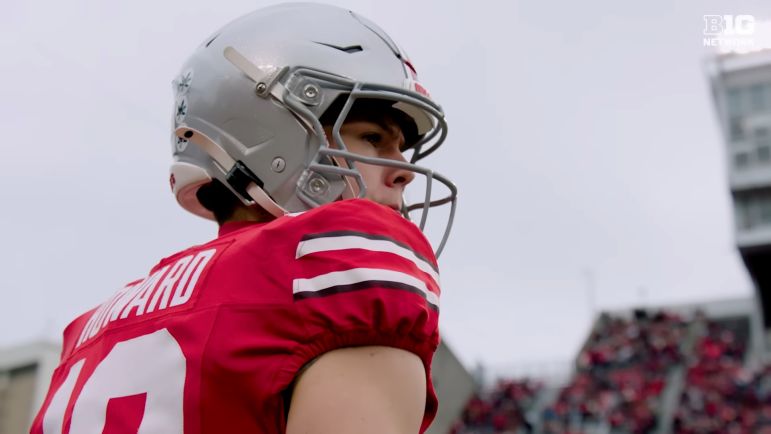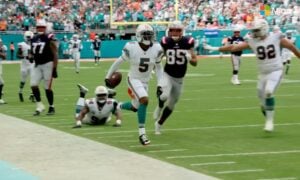For several years now, I have kept a personal running spreadsheet during the draft process. The goal was to learn about the players through information gathering. I will share a visual and some takeaways from the data points I create each year, simply called interest and athletic scores, with explanations to follow.
As Dave Bryan and Alex Kozora discuss regularly, the Steelers have a type of player they look for, and what the scores attempt to achieve is seeing who checks many of those boxes, or vice versa. You will notice many of the inspirations for these scores come from their studies of Pittsburgh’s draft trends over the years and have fared well in whom Pittsburgh has ultimately drafted.
While there is no perfect way to predict the 2025 Steelers selections, I feel great about what the data points measure and, of course, would love to hear feedback. Also, there is only so much time in the day and additional things I’d like to measure, so I focus on the crucial and/or practical choices.
Now for more explanation to how the scores come together. The biggest point I want to make is this is not a big board or round projection view, rather trying to pinpoint names the Steelers may select regardless of when they are drafted. After I get a healthy pool of names that I hear about or research, I begin the scoring.
Interest Score: Here I configured a points system for the following important factors. College performance, body type, experience, age, position, competition level, pro day attendance, pre-draft meeting(s), and Senior/Shrine Bowl invitations/participation.
Athletic Score: simply 11 combine metrics excluding wingspan and whether or not they were within a threshold in each metric of any player drafted at their position by the Steelers since 2013. Pro day numbers are only included if the player didn’t do the drill at the combine.
Clear as mud? Here are quarterbacks (QB) that were combine invites:
NOTE: If you don’t see a name, please ask. I have many more non-combine players compiled, but I excluded them for a cleaner chart.
The top interest score is Ohio State’s Will Howard (11.3), tied for third-best in the entire 2025 draft class. Highly attended pro day (HC Mike Tomlin, GM Omar Khan, OC Arthur Smith) including a dinner and formal combine meeting. College performance, body type, and Senior Bowl are strong scores, with age (23) the lowest. Seven athletic score, three DNPs (40-time, bench), and missed the three-cone threshold. Day Two/Three projection.
For context, former Steeler Kenny Pickett was drafted in the 2022 class (10.4 interest, the second-best that year) and had an eight athletic score. That was the highest interest score at the position since, until Howard’s 11.3, that’s nearly an entire interest point higher.
Second in this class is Jaxson Dart of Ole Miss (10.7). Pre-draft and combine meetings, pro day attendance (Assistant GM Andy Weidl), college performance, body type, age (21), experience, and Senior Bowl all good box checks. Three athletic score, only measuring in, and missed in arm length. Likely a top-100 prospect.
Third best is Alabama’s Jalen Milroe (9.9). Highly attended pro day (Tomlin, Khan, and notably QBs coach Tom Arth), including a dinner meeting. Performance, age (22), Senior Bowl were other positive scores, with experience his lowest mark. Five athletic score, only measuring in and his impressive 40-time (4.4), and missed in arm length. Day Two seems more appropriate than the first round in my opinion.
Notre Dame’s Riley Leonard (9.4) had high pro day attendance (Tomlin, Khan, Smith). Performance, age (22), experience, and Senior Bowl were also positives, but lack of meetings are notable. Four athletic score, only measuring in, and checked all those boxes. Day three seems most likely.
Syracuse’s Kyle McCord (8.0) had a pre-draft visit late in the process. College performance, age (22), Shrine Bowl, and experience are his better scores. Much less pro day attendance than his peers thus far. Four athletic score, only measurements/weighing in, and checking those athletic boxes. Day Three possibility.
Four QBs land in the seven tier of interest scores: Quinn Ewers of Texas (7.8 interest, three athletic), Miami’s Cam Ward (7.5, three), Louisville’s Tyler Shough (7.4, seven), and Minnesota’s Max Brosmer (7.1, six).
Most met with Pittsburgh in various capacities, except for Ward, who is likely the first overall selection come draft night. Ewers also had a pro day dinner. With a lack of workout participation at the position, no combine QB had a perfect athletic score.
Since no QBs participate in the bench, ten is the highest possible score. One player checked all those boxes: Missouri’s Brady Cook (6.8 interest).
One player with a lower interest score stands out: Colorado’s Shedeur Sanders (5.9 interest, three athletic), who recently turned some heads with a pre-draft visit. He would require an early pick investment, possibly a trade-up. Several others that Pittsburgh has eyed seem more likely, considering their current draft slots.
The wait for Aaron Rodgers’ decision for 2025 leads to an uneasy feeling at the most important position in football. This, and the fact that it is not the strongest class, has most on pins and needles, and it will be fascinating to watch unfold. One thing’s for sure: I can’t wait to see how it pans out.
Do you think Pittsburgh will draft one of the names listed above? Who are some of your favorites? Thanks for reading, and let me know your thoughts in the comments.









